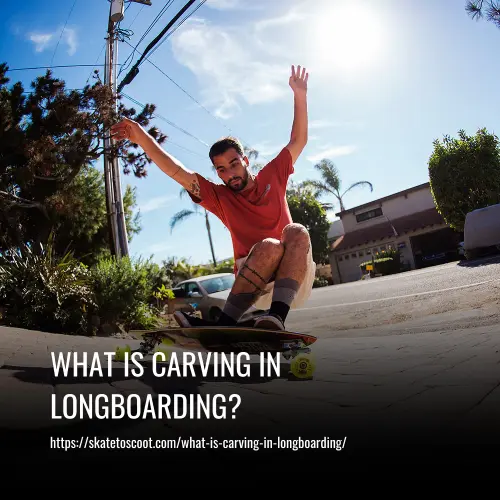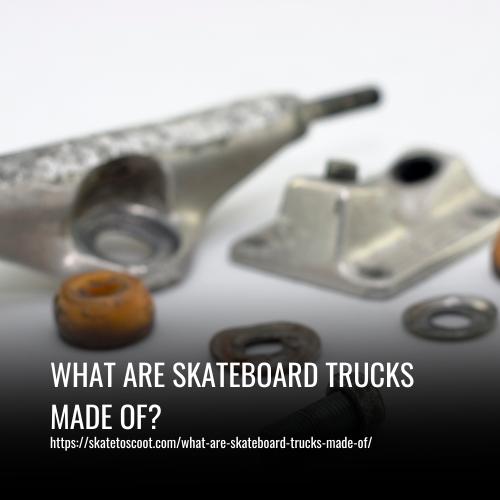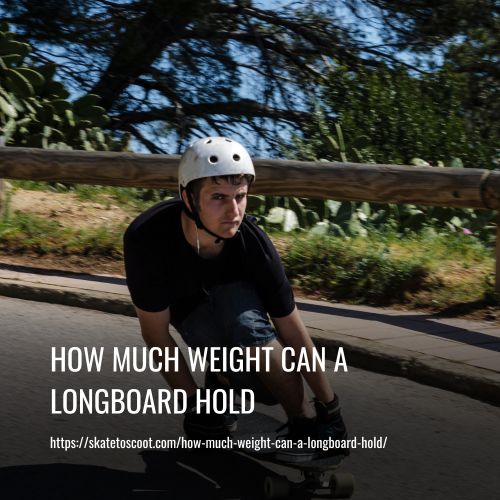As an Amazon Associate we earn from qualifying purchases.
Carving is a longboarding technique that involves continuously going left and right, creating an “S” pattern on the pavement. It’s a great way for both experienced and beginner riders to regulate their speed – whether on flat terrain or even going uphill.
With carving, you can maintain your speed and even increase it when you need to, or control your momentum when going downhill. You do this by taking sharp turns as it helps create a centripetal force that provides momentum; however, make sure to take broad corners as this will help keep your board from picking up too much speed.
So in summary, carving on a longboard is a great way to stay safe while also regulating your speed, whether going uphill or down!

Benefits From Carving
Carving is the quintessential longboarding activity. Not only does it provide a smooth, effortless experience for the rider as they zip over any sloped terrain, but it also helps them to control their speed and direction. Foot techniques such as sliding or pumping might be able to get you down a hill quickly, but nothing beats carving when it comes to pure enjoyment on a longboard.
And that’s not all – learning to carve correctly can take your longboarding skills to the next level, providing you with an opportunity to explore new places and discover exhilarating experiences. With practice, you’ll be carving like a pro in no time!
Pre-Carving Rituals
Longboarding is a great way to enjoy an adrenaline rush, but it should not be taken lightly. Before taking your board for the first ride, it is important to make sure that you have sufficient protection gear, like helmets, wrist guards, elbow protectors, and knee pads.
For a safe way to practice carving your board, look for a large space or avenue with a moderate incline – it should not be overly steep so that you can gradually build up your skills.
In conclusion, having the appropriate precautions in place before longboarding is essential for ensuring maximum safety and enjoyment. So follow these tips and head out there right away!
Toe-Focused and Heel-Focused Carving
Toe-focused and heel-focused carving can be an important part of skateboarding, as it helps you to control the direction and rotation of your board. Everyone has a naturally preferred stance when skating – some are regular skaters, with their left foot forward, while others are goofy skaters, with their right foot at the back.
For regular-footed skaters, pushing the toes into the rail will provide a clockwise rotation, while heelside turning produces a counterclockwise spin. Conversely, for goofy-footed skaters, the toeside turns to cause a counterclockwise rotation, and the heelside turn creates a clockwise spin.
No matter what kind of skater you are – regular or goofy – mastering toe-focused and heel-focused carving can help you master control over your board’s movements!
Shifting Your Weight
Shifting your weight when longboarding is essential for a successful carving experience. It requires the integration of all parts of your body, from head to toe. By shifting your weight, you can control the speed, direction, and angle of your carving.
The first step in shifting your weight is to identify where you want to go and where you are currently on the board. Make sure not to accelerate too quickly, as this can be dangerous. Then begin by gently pushing your shoulder forward; this will cause your body to turn and apply pressure to the back half of your foot.
For a secure form during the turn, remember to glance behind while expanding your chest and make sure that both knees are bent with arms slightly open. Through practice, you will develop an effortless motion that allows you to easily move and control your body’s weight while longboarding.
Essential Carving Suggestions
If you’re just starting out with carving, there are several tips and techniques to keep in mind. Firstly, avoid leaning too far forward or back into the rotation as this can cause you to lose control and fall off your board. Instead, focus on keeping contact between your toes and the deck of your board when pushing on one side or the other.
Once you’ve got a handle on the basics of carving, it’s time to start working on improving your technique. This involves crouching low or diving onto each curve when necessary for maximum acceleration and speed. You should also stand upright and loosen up after leaving each turn to allow for better control over upper and lower body movements.
Mastering these fundamentals is definitely essential if you want to achieve fluidity during carved turns without having to leave the board. By practicing these moves consistently, you’ll eventually be able to carve comfortably even on level terrain.
Reasons for Carving
Carving on a longboard is an essential skill to have if you want to master riding downhill. And there are several useful reasons why you should learn this technique.
By carving, you’ll be able to keep your speed and ride with more control – which is especially important when going up steep hills or turning tight corners. Carving will also help slow your longboard down significantly before using the footbrake or a corner, thus making it easier for you to maintain balance while still reducing your speed.
Not only that but studying carving also helps lay the foundation for exploring sliding later on. It’s true, practice makes perfect; above all else make sure that when you carve, it’s not only about performing tricks and fancy looks – but truly getting in touch with your inner longboarder.
Why You Choose to Learn Carving
Carving is a skill that people from all kinds of board sports backgrounds can appreciate, especially those who love to surf or snowboard. It’s a feeling that’s very familiar and comforting and it’s why many people choose to learn how to carve on longboards.
By mastering the techniques involved in carving on a longboard, you can improve your coordination, agility, and balance while also getting an interesting perspective of your local surroundings! It’s an enjoyable skill to learn with clear benefits no matter what other boardsports you may already practice.
If you’re looking for a new way to challenge yourself and connect with nature as well as all the fun that comes along with riding a skateboard, then learning how to carve is definitely worth your time.
Why Is Set Up Carving Important?
Set-up carving is one of the most important skills to have when skateboarding. It helps you control your movements, get a smoother transition between slides and push against your board easier when it comes time to make it drift out.
To set up carve, you need to place your body in such a position that you can best leverage your weight on the skateboard. This will give you maximum control of your board during the slide and allow for a smoother transition into traction which allows for more controlled slides.
In short, setup carving is an essential skill that every skater should master in order to safely and effectively ride their board with style.
What Happens If You Don’t Do It?
If you don’t set up carve properly, or you don’t do it at all, you’ll quickly notice some negative effects. You may find yourself having difficulty with sliding your board and your wheels won’t break traction easily (or at all!), which will make the slide jittery and difficult to control.
Your weight will also be off balance on the board, making it increasingly harder to weigh it correctly on your toes or heels in order to get leverage and thusly control the slide. Your body positioning could be off as well, making it nearly impossible to stay on board and control the board.
The consequences of not following proper carve setup can lead to potentially dangerous maneuvers like a high side or low side – due to a lack of being able to control the slide easily. So if you want more accurate and controlled slides, be sure to follow the correct setup procedures for carving!
Tips To Keep In Mind When Learning To Carve
When learning to carve on a longboard, there are a few tips to keep in mind that will help you master the skill.
1. Don’t Skimp On Safety
When it comes to engaging in extreme sports, safety should always be your first priority. The last thing you want is for an accident to ruin a fun day of adventure. That’s why it’s important not to skimp on safety when participating in such activities.
Investing in protective gear like knee pads, elbow pads, gloves, wrist guards and helmets can help keep you safe while also allowing you to progress faster since they will give you extra confidence as you ride or skate. Even if the piece of equipment is a bit pricey, the investment may prove invaluable since it could save you from a nasty injury or two.
2. Use Your Arms
When you’re learning to skateboard or perform any other type of trick on your board, it’s important to remember that your arms play an essential role. They help you maintain balance and keep an active stance, so don’t feel like you have to keep them tucked away!
Using your arms out by your sides can give you a whole new level of comfort when performing tricks and allow you to progress more quickly. Plus, once you get more experienced at skating, you can start using your arms less as the muscle memory kicks in. So the next time you try something new on the board, don’t forget to use those arms!
3. Gradually Increase Carving Power
If you want to carve with more power and depth, it’s best to do it gradually. As you become more comfortable riding your board, begin to increase the force behind your feet. But make sure that the road is dry and that you don’t apply too much pressure or else your board can lose its grip.
4. Get Used To A Run
If you want to get used to running, it’s important to check your surroundings before you start. This is especially true if you plan on tackling hills or another challenging terrain.
It’s best to start at the bottom and work your way up so that you can control your speed better. Carving down a hill can only help reduce speed so much, especially if there are obstacles in the way, so make sure you have enough room to stop if needed.
FAQs
To carve on a longboard, riders initiate turns by leaning into the direction they want to go and shifting their weight to the front or back of the board. They use their body and arm movements to guide the board into smooth, flowing turns.
Longboards with a flexible deck and larger, softer wheels are best for carving. The flexibility of the deck allows for more responsive turns, while the larger, softer wheels provide better grip and traction while carving.
Yes, anyone can learn to carve on a longboard with practice and persistence. It’s a skill that takes time to develop, but with patience and dedication, riders can improve their carving technique.
While there are different techniques for carving on a longboard, the key is to focus on body positioning, weight distribution, and fluid movements to guide the board through turns. It’s also important to practice on different terrain to refine carving skills.
Carving is important in longboarding because it allows riders to maintain speed and control while navigating downhill slopes and corners. It also adds fluidity and style to the overall riding experience.
Carving is distinct from other longboarding techniques such as sliding or pumping, as it focuses on making smooth, wide turns rather than abrupt or technical movements.
To improve carving skills, it’s essential to practice regularly and focus on shifting weight and making smooth, controlled turns. Experimenting with different stances and adjusting the board’s setup can also help enhance carving abilities.
Carving on a longboard can be done on various terrains, including roads, hills, and even skateparks. However, the level of difficulty may vary depending on the terrain.
Conclusion
Carving is an essential part of longboarding and mastering it can lead to beautiful downhill rides, sharper turns, and greater control of your board. Taking the time to learn how to carve will be invaluable for any longboarder’s overall skillset and make them a more adept rider.
It is not a complicated skill, just one that requires practice and patience. With enough dedication, though, you’ll be able to take your riding game to the next level.
Amazon and the Amazon logo are trademarks of Amazon.com, Inc, or its affiliates.



